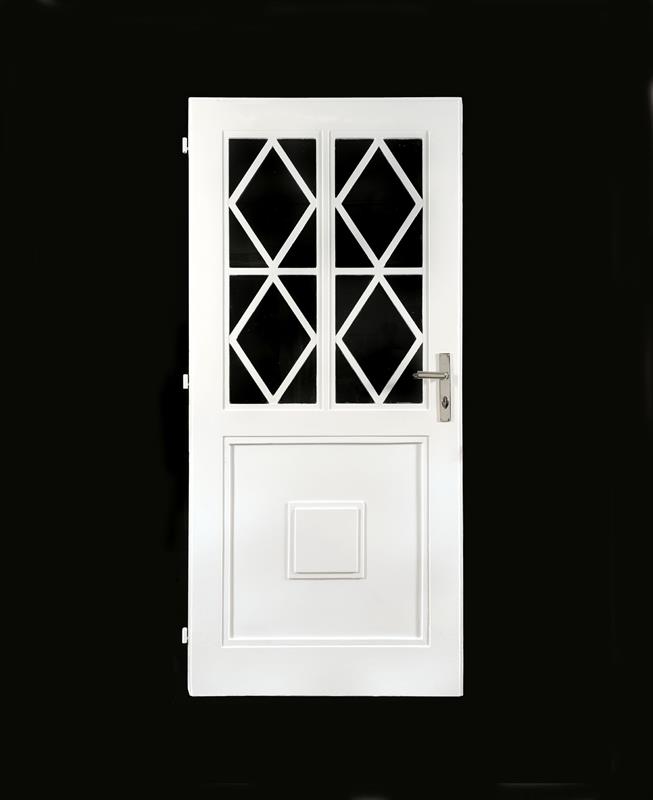
St. Pölten 1880 - 1939 Salzburg
Two Doors and Two Pairs of Original Door Handles from Villa Schießl
2 doors (design Hans Ofner): softwood, white lacquer, glass
2 pairs of door handles with handle-plates (design Josef Hoffmann): brass and iron respectively, renickel-plated
4 pairs of door handles with handle-plates available separately
Door glass half: H 210 cm, W 97 cm, D 4 cm
Door glass full: H 194 cm, W 88 cm, D 4 cm
Handle-plate app. 24 x 4 cm
Door handle L 11 cm
Such door handles can also be found in the house of Hoffmann’s birth in Pirnitz that is a Josef Hoffmann museum today.
The surface of the doors has been professionally restored. The door handles show age-related traces of usage.
Provenienz:
Villa Schießl by Hans Ofner, St. Pölten
Ausstellungen:
Vienna, Hofmobiliendepot, 2018
Literatur:
cf WW-Archives, MAK Vienna, Photo-Archives WWF 102-116-1 and WWF 104-232-1
cf Deutsche Kunst und Dekoration, vol. XXVIII, Darmstadt 1911, p. 197 and p. 202 (Villa Schießl)
cf Eduard F. Sekler, Josef Hoffmann. Das architektonische Werk, Salzburg and Vienna 1982, ill. p. 102, WV 121 (door handles: home of Alexander Brauner, Hohe Warte, Vienna)
cf Exhibition catalogue "Die Wiener Secession und die Moderne 1900-1925", Moravian Gallery Brno 2004-05 and Municipal House Prague 2005, ill. p. 311, no 709 and 711
Exhibition catalogue "Wagner, Hoffmann, Loos und das Möbeldesign der Wiener Moderne. Künstler, Auftraggeber, Produzenten", Hofmobiliendepot - Möbelmuseum Vienna, Vienna 2018, ill. p. 75, cat. no 44
In 1911, the Darmstadt-based periodical Deutsche Kunst und Dekoration, then one of the most recognised art magazines, published an article on the Villa Schießl in St. Pölten when it had only recently been completed by Hans Ofner (1880-1939). The reviewer emphasised Ofner’s remarkable and accomplished achievement of adapting a former factory as a residential building. Hans Ofner based the general idea for his reconstruction on the concept of a “gesamtkunstwerk” or “total work of art”. As Ofner had been a student of Josef Hoffmann at the Vienna School of Applied Arts between 1903 and 1907, it was only natural that he would have familiarised himself with this idea, according to which all architectural and decorative details needed to be subordinated to a uniform overall design. This also included the doors to all of the rooms in the building, for which Ofner resorted to Josef Hoffmann’s return to the plain geometric forms originally developed during the Biedermeier period. One of the principal features of this uniform design concept, which was actually rooted in domestic traditions, was the creation of a perfect harmony between functional and emotional values. Geometric abstraction and cosy warmth ideally blended together, which is also exemplified by the present door. Christian Witt-Dörring
